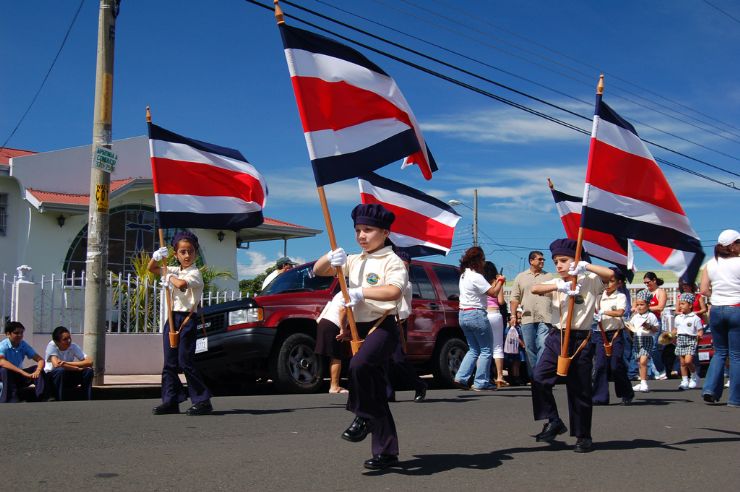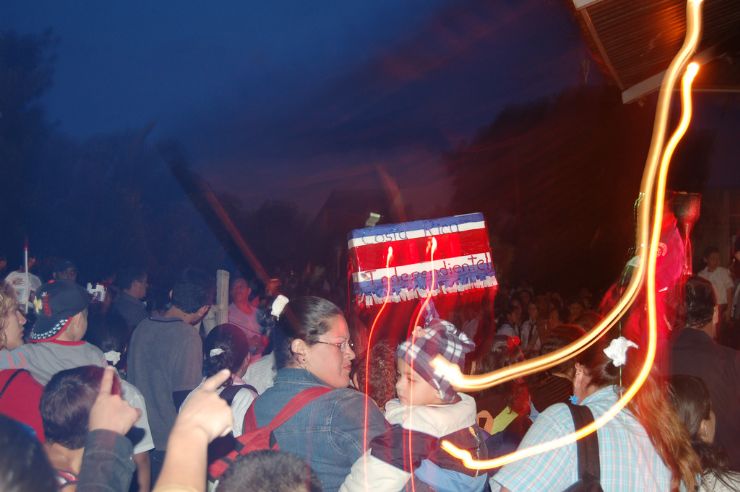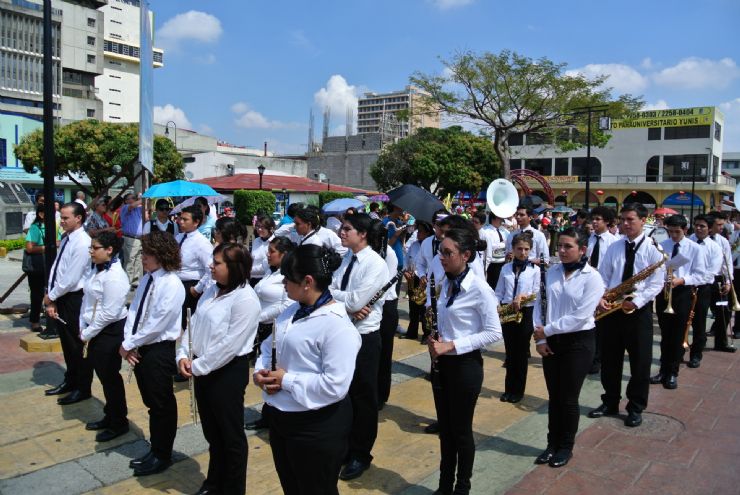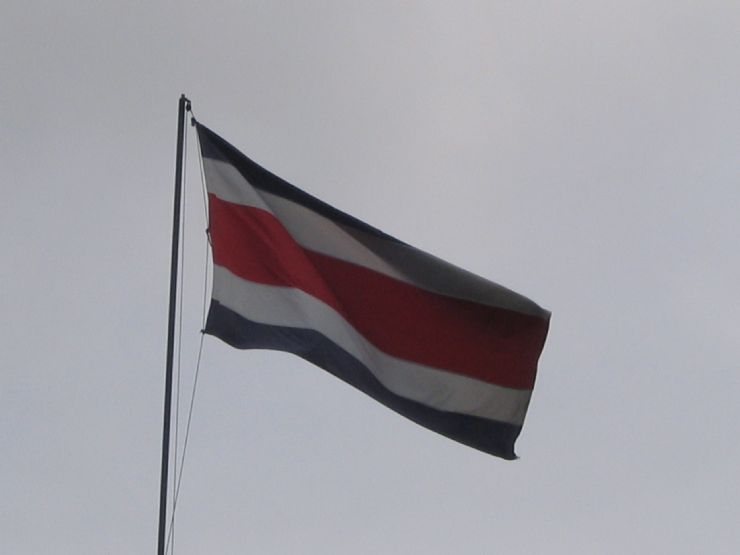
Kids in uniforms in an Independence Day Parade - Photo Credit :
Bruce ThomsonThe inhabitants of my home country love a good party, and love a good reason to have a party. One of those good reasons is Costa Rica’s Independence Day, and I hop out to socialize with the locals and the visitors every year. It’s a great celebration, and something that I look forward to every year. It takes me about 3 days to recover from all the celebrating, but I eventually get back to hopping around Costa Rica, exploring the land and the people.
The History of Costa Rica’s Independence
I like to pride myself as an amateur Costa Rican historian, since I’ve been exploring and investigating the history of the county for so long. This means that I know a few tidbits about the independence of Costa Rica that some people don’t realize.
The first fun fact is that technically, Costa Rica never really had to fight for its independence from Spain. Along with Nicaragua, Costa Rica was declared an autonomous province according to the Spanish Constitution of 1812. This doesn’t stop Costa Rican from celebrating the official Central American independence from Spain, though.
That independence from Spain came after a years-long war, called the Mexican War of Independence, that ended in 1821 when Guatemala declared victory for Central America. Though the war was won in September of that year, it was a least a month later before the official news even reached Costa Rica.
Another interesting fact is that after the war, Costa Rica didn’t actually become a sovereign state immediately. Instead, it joined the First Mexican Empire, along with other Central American countries. This decision was one that caused a rift between cities in Costa Rica. Some cities were in favor of joining the First Mexican Empire, including Cartago, the capital at the time, while others were in support of full independence. There was even a civil battle fought at Ochomogo to decide the fate of the country. The Republicans, who were not in favor of joining the First Mexican Empire, won the battle and moved the capital of Costa Rica to San José.
After that, Costa Rica became part of the Federation Republic of Central America, and it wasn’t actually until 1838 that Costa Rica became truly independent, after the Federation Republic of Central America disbanded and no longer existed.

Lanterns or Faroles Parade in the streets - Photo Credit :
Bruce Thomson7 Days / 6 Nights
Starting at $779 per person
Costa Rica has a somewhat tense past with Guatemala City, mostly due to distance between that area and Costa Rica. The people of Costa Rica never really had a close connection to the people or government of Guatemala, so they also didn’t feel an allegiance to that government. Costa Rica always hesitated to become politically tied to Guatemala, and this has negatively impacted the integration of the two regions.
Despite this history, Costa Rica and its people still recognize the significance of that victory for all of Central America, and have declared September 15th as an official holiday called Independence Day. And, boy, do we celebrate! But more on that later.
After independence was declared, there was still much to do; Costa Rica adapted the country’s first constitution, and held and celebrated elections. Those that were elected in December of 1821 are an important part of the country’s history, and worked hard to make industrial and commercial progress for Costa Rica and its people.

San José band in procession
Independence Day Celebrations
Like I said, Costa Rica knows how to hold a celebration, and I’m here to talk to you about some of my first-hand experiences throughout the many years that I’ve traveled through Costa Rica.
Before I talk about the celebrations, though, I want to talk a little bit about what the day means to Costa Rica citizens. While it means dancing, drinking, and eating to our heart's content, it also means something more. For me, and for all the living creatures in Costa Rica, Independence Day is a time for us to reflect on our heritage, and to find patriotism in our history; this day is about our country deciding that we had, and we were willing to explore and find, our own national identity.
That being said, if you are visiting Costa Rica at this time, you can expect to find Ticos even more jovial than usual! The celebrations take place in all of the country’s regions, beginning on the 14th of September.
There are a few great things that happen on the 14th. The future of our great country, our children, celebrate in the most perfect way. Prior to the celebration, they make homemade lanterns or "faroles". On the eve of the holiday, they light their lanterns and sing the national anthem of Costa Rica through the streets as part of the Lantern Parade or "Desfile de Faroles" . This event is reminiscent of how delegates in Guatemala celebrated their freedom so many years ago.
Even before the children hold the Lantern Parade, though, Central America begins celebrating their upcoming holiday with the Torch Run. The torch is light on September 9th in Guatemala, then it travels through many Central American regions in celebration and reflection of the original Independence Day. The final stop for the torch is Cartago, Costa Rica.

Costa Rica Flag
One September 15th, Costa Rica continues to celebrate Independence Day with a number of events, including raising of the national flag. You’ll hear me, and many other humans and creatures singing the national anthem, of course! And, there are so many parades, so many awesome parades in the streets. Children wear costumes of traditional Costa Rica clothing, and there are dancers, bands, and fireworks. The parades are so vibrant and colorful, that it is impossible for anyone not to feel pride and patriotism.
Of course, there is also a lot of food! There are food vendors on the streets, lining the roads to serve all the amazing traditional Costa Rican foods like tamales, rice pudding, yucca, and fried plantains. There are also many public places that are free to the public that welcome visitors on September 15th for celebration. There are often folk shows, dancing, and of course, amazing music filling the streets and common areas.

